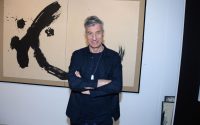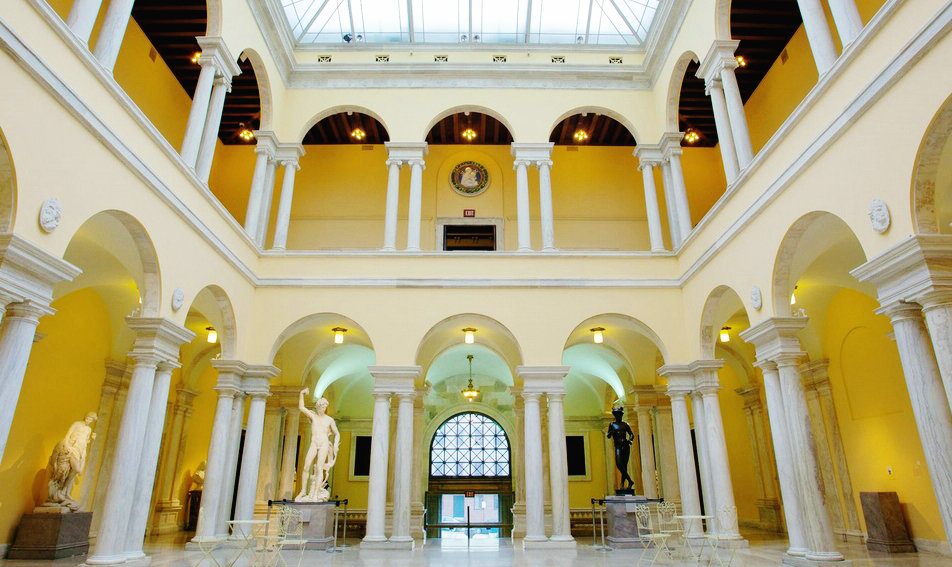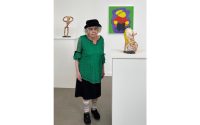Malta Biennale Names 72 Artists for Inaugural ‘Insulaphilia’ Edition
Organizers of a new art biennale set to take place in the southern Mediterranean Island of Malta have named 72 artists from an estimated 30 countries that will participate in its inaugural edition, which is due to run next year from March 11 to May 31, with exhibitions set to take place across twelve historical sites in Maltese cities.
Established names like Cecilia Vicuña, Tania Bruguera, Laure Prouvost and Pedro Reyes will be among the participants.
The 72 artists will participate in the main exhibition of the Biennale, which is curated by Sofia Baldi Pighi, an independent Italian curator, who is temporarily based in Malta. The show centers around issues related to the Mediterranean more broadly, as detailed in her curatorial statement titled “Insulaphilia.” The concept refers to an obsession with islands and, Baldi Pighi told ARTnews, serves as a prompt for artists to reflect on Malta’s unique position at the crossroads of major surrounding regions and their histories. She has organized the main exhibition into four sections, each stemming from the themes laid out in “Insulaphilia”: regional issues, facets of decolonization, the political dimensions of the Mediterranean, and various forms of resistance.
Like many major art events in their first runs, the Malta Biennale has faced challenges associated with its location and timing. The organization of the debut edition, which has been two years in the making, takes place as geopolitics have become increasingly grim amid an ongoing war in the Middle East. Baldi Pighi said that the Biennale seeks to be a “safe place” for artists uprooted from conflict-torn regions to interrogate sensitive topics. The ethos extends not only to the artists participating in the show’s main thematic exhibition, but also to the eleven national pavilions flanking it—representing Austria, China, Franco-Germany, Italy, Malta, Palestine, Poland, Serbia, Spain, Turkey, and Ukraine.
Two artists, one Palestinian and another Ukrainian, will present solo exhibitions to represent their respective national pavilions (their names have not yet been disclosed, though Pighi confirmed the artists are currently located in Poland and Malta, respectively.) Organizers extended the invitation to host a pavilion recognizing Palestine in June, a move that Pighi notes preceded the Venice Biennale’s rejection of a Palestinian-affiliated museum’s proposal to mount a collateral event in association with the biennale’s 2024 edition. “It was very important to have Palestine among us,” said Pighi.
In an email to ARTnews, Mario Cutajar, the president of Heritage Malta, a government agency overseeing culture that is co-organizing the biennale, emphasized the representation of those pavilions. “The biennale would not be relevant if it failed to discuss our present,” Cutajar said, adding that resolution-seeking “must be in itself an international endeavor.”
Pighi is explicit in her intent not to curate an exhibition replicating other biennales or importing displays that seem detached from the historical sites that will serve as backdrops and hosts to artworks. Throughout the show, particularly in the main exhibition, there will be a focus on artworks addressing current issues and capable of navigating a conservative climate in Malta, where a migrant crisis and strong restrictions on abortion rights have become top concerns for younger residents of the island. She emphasized the “soft power of culture involved in a biennale project,” as a consideration in organizing the event. Malta, she added, has only a few contemporary art spaces.
The biennale will also be host to artist collectives active in Europe. Among them is the Italian collective Post Disaster, a group that uses urban rooftops in Taranto, Southern Italy, as performative spaces to stage discussions about industrial-induced crises. For the biennale, the group’s members will mount a new site-specific installation at Fort Saint Elmo, a 16th century military site in the capital city of Valletta. That work will respond to Malta’s militarized architecture.
Some of the works set to be shown by higher-profile figures, among them Vicuña, Bruguera, Prouvost and Reyes, are already well-known in the U.S. and Europe. A 2018 work by Bruguera will be restaged on the façade of the 16th century Armoury building in Birgu, a town in Southeastern Malta that is walking distance from the biennale’s other locations. Reyes, who is Mexican, will exhibit work associated with his 2022 project “Artists Against the Bomb,” which combines artists’ calls against nuclear threats, on the nearby island of Gozo. Elsewhere, El Salvador–born, New York–based artist Guadalupe Maravilla will exhibit work inside of Valleta’s 17th century Ta-Pilar Church.
Pighi emphasized the strategic inclusion of internationally prominent voices like Bruguera, saying that her practices, rooted in research in migration, provides a protective layer for the exhibition’s discourse and mitigates the risk of censorship. In turn, she sees Bruguera and the recognition for some of her peers, as a safeguard for younger or lesser-known Maltese artists participating in the biennale.
Below is the full artist list for the 2023 Malta Biennale.
Alan Abd El Monim, Italian/Egyptian
Camilla Alberti, Italian
Anna Anderegg, Swiss
Teresa Antignani, Italian
Jean-Marie Appriou, French
Rosa Barba, Italian
Simon Benjamin, Jamaican
Laura Besançon, Maltese
Aaron Bezzina, Maltese
Rebecca Bonaci, Maltese
Josian Bonello, Maltese
Isabelle Borg, Maltese
Claude Borg, Maria Borg, Sumaya Ben Saad, Rebecca Mifsud, Maltese
Amy Bravo, American (USA)
Tania Bruguera, Cuban
Siwani Buhlebezwe, South African
Teresa Busuttil, Australian
Anna Calleja, Maltese
Austin Camilleri, Maltese
Edson Chagas, Angolan/Portuguese
Mel Chin, Chinese-American
Leo Chircop, Maltese
Dolphin Club, Maltese, French
Joseph Cochran II, American (USA)
Andrea Conte (Andreco), Italian
Gaia De Megni, Italian
Mònica de Miranda, Portuguese/ Angolan
Adama Delphine Fawundu, American (USA)
Zehra Doğan, Kurdish
Dolphin Club, Maltese, French
Madeleine Fenwick, British
Andrea Ferrero, Peruvian
Martina, Romeo Roxman Georgina, Gatt, Maltese
Nina Gerada, Maltese
Sara, Eleonora Goldschmied, Chiari, Italian
Bettina Hutschek, German
Anne Immelé, French
Daniel Jablonski, Brazilian
Barbara Kapusta, Austrian
Dew Kim, South Korea
Konstantina Krikzoni, Greek
Wioletta Kulewska Akyel, Polish
Sara Leghissa, Italian
Ji Yeon Yaloo, PiaLim, Borg, Korean, Maltese-Australian
LuzLizarazo, Colombian
Edson Luli, Albanian
Basim Magdy, Swiss/Egyptian
Guadalupe Maravilla, El Salvadorian
Jermay Michael Gabriel, Italian
Karyn Olivier , American
Zazzaro Otto , Italian
Adrian Paci, Albanian
Post Disaster (Collective), Grazia Mappa, Gabriele Leo, Gabriella Mastrangelo, Peppe Frisino, Italian
Dijana Protić, Croatian
Laure Prouvost, French
Keit, Florinda, Neils Bonnici, Camilleri, Plotard (Prune Our Skin), Maltese, Maltese, French
Agnes Questionmark, Italian
Anna Raimondo, Italian
Pedro Reyes, Mexican
Cemile Sahin, Kurdish
Paul Sammut, British
Zineb Sedira, French/Algerian
Ana, Giuditta Shametaj, Vendrame, Italian/Albanian, Italian
Anthony Spagnol, Maltese
Tom Van Malderen, Belgian
Fabrizio Vatieri, Italian
Raphael Vella, Maltese



